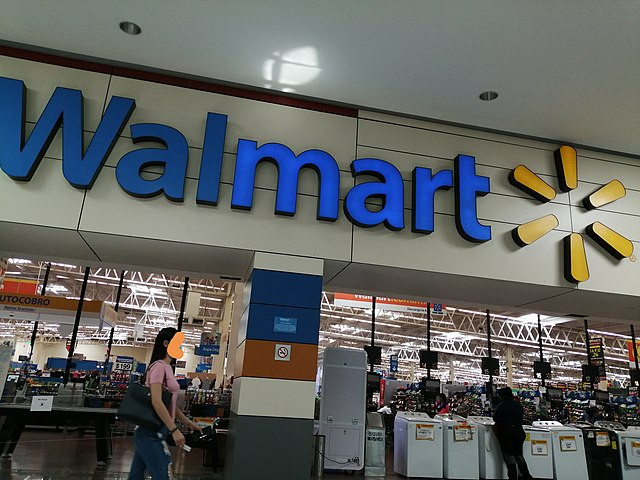Walmart is stepping up its competition in the health care space with the launch of a new prescription delivery service that promises to bring medications directly to customers' doorsteps. As CVS and Walgreens face financial challenges and close hundreds of stores across the U.S., Walmart's latest move could reshape the pharmacy landscape by offering a more convenient, seamless shopping experience for millions of Americans.
The nation's largest retailer announced on Tuesday that prescription deliveries are now available in six states-Arkansas, Missouri, New York, Nevada, South Carolina, and Wisconsin-with plans to expand to 49 states by the end of January 2024. The service allows customers to receive their prescriptions along with other items, such as groceries and household goods, all delivered together. North Dakota will be the only state where the service will not be available due to regulatory issues.
According to Tom Ward, Walmart U.S.'s chief e-commerce officer, the decision to launch prescription deliveries was driven by customer demand. "This is actually the No. 1 service requested by our customers," Ward explained. He noted that Walmart had tested the service in several states and found that customers appreciated the convenience of receiving medications alongside everyday products like tissues, blankets, and food items.
The new delivery service is priced at $9.95 per order for non-members, while Walmart+ members can receive their prescriptions at no extra cost. The company is integrating additional safety measures, including tamper-evident packaging and real-time tracking through Walmart's app. Customers will also receive a photo confirmation of their delivery, and new prescription orders will prompt a phone consultation with the pharmacy for safety reasons.
Walmart's foray into prescription delivery is part of a broader effort to outcompete traditional pharmacy chains on both price and convenience. While Walmart has held a smaller share of the prescription drug market compared to CVS and Walgreens-just 5% in 2023, according to Statista-the new delivery service could help it capture market share, especially as its competitors face significant financial headwinds. CVS, the largest U.S. pharmacy by prescription drug revenue with over 25% market share, and Walgreens, which holds nearly 15%, have both struggled with falling reimbursement rates for prescription drugs and declining foot traffic. In response, both companies have announced plans to close hundreds of stores.
Walgreens, for instance, revealed last week that it plans to close 1,200 locations over the next three years, with 500 closures expected in fiscal 2025 alone. CVS has also announced its intention to shutter 900 stores as part of a larger restructuring effort aimed at cutting $2 billion in expenses. The closures reflect the growing difficulty these pharmacy chains face in staying profitable amid rising competition from big-box retailers like Walmart and online platforms such as Amazon, which is rapidly expanding its pharmacy services.
Walmart, on the other hand, has the advantage of scale and logistics infrastructure, operating nearly 4,600 in-store pharmacies across the U.S. Its ability to offer prescription delivery alongside groceries and other items gives it a unique edge in providing a comprehensive and convenient service for consumers. Ward emphasized this point, saying, "If you're sick, we can deliver the necessary medicine along with everything else you need to feel better: cough drops, a heating pad, blanket, and orange juice."
Despite the competitive pressure, both CVS and Walgreens already offer same-day prescription delivery services. However, they are facing deeper structural issues that go beyond customer convenience. Falling reimbursement rates from insurers, particularly for Medicaid prescriptions, have squeezed profit margins for these pharmacy chains. Inflation and labor costs have also added to their financial challenges, prompting store closures and layoffs as part of their cost-cutting strategies.
The pharmacy market has also been hit hard by the rise of "pharmacy deserts" in rural areas, where community drugstores are disappearing. A recent study by the Journal of the American Medical Association found that nearly half of U.S. counties have communities located more than 10 miles from the nearest pharmacy. The closure of major chain stores like CVS and Walgreens will likely exacerbate this issue, leaving many Americans with limited access to medications and pharmacy services.
Walmart's decision to expand its prescription delivery service is part of a broader trend among large retailers to diversify into health care. Amazon, for instance, recently announced plans to open physical pharmacies in 20 U.S. cities by 2025, with the goal of offering same-day prescription service to nearly half of its U.S. customers. The competition among major retailers to capture a larger share of the health care market is intensifying, with each company leveraging its logistics networks and scale to provide quicker, more convenient services.
While Walmart has faced some setbacks in its health care ventures-such as the closure of several health clinics earlier this year due to high operating costs-it continues to view the sector as a key area of growth. Health and wellness services, including pharmacy and over-the-counter products, now account for about 12% of Walmart's U.S. revenue, according to its latest annual report. By expanding its prescription delivery services, Walmart aims to strengthen its presence in the health care market while providing an integrated shopping experience that sets it apart from traditional pharmacies.






